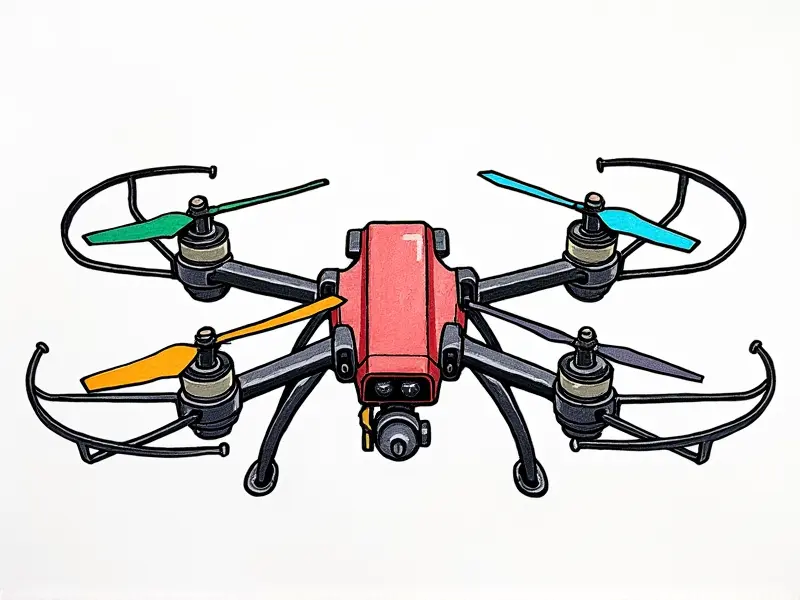Can I fly with iFlight drones?

Legalities of Flying iFlight Drones
Flying drones, including those from the iFlight brand, comes with a set of legal requirements that must be adhered to. The Federal Aviation Administration (FAA) in the United States and similar aviation authorities around the world have established specific regulations for drone operation. These rules are designed to ensure safety, privacy, and compliance with airspace laws.
Before taking your iFlight drone out for a flight, it's crucial to familiarize yourself with local and national regulations. This includes obtaining any necessary permits or licenses, understanding no-fly zones, and adhering to altitude restrictions. Ignoring these guidelines can result in hefty fines and legal complications.
Where Can You Fly iFlight Drones?
Determining the appropriate locations for flying your iFlight drone is essential to avoid legal issues and ensure a safe experience. Public parks, beaches, and open fields are generally acceptable areas where you can fly your drone without interference from buildings or other obstacles.
- Public Parks: Many public parks allow recreational drone flights as long as they do not interfere with park activities.
- Beaches: Coastal areas provide vast open spaces ideal for flying drones, but be mindful of beach regulations and wildlife protection zones.
- Rural Areas: Open fields in rural settings offer ample space to test your drone's capabilities without the risk of hitting power lines or buildings.
iFlight Drone Regulations Explained
The iFlight brand offers a range of drones designed for different purposes, from hobbyist models to professional-grade equipment. Each type comes with its own set of regulations and requirements:
- Hobby Drones: These are typically smaller in size and intended for personal use or recreational activities.
- Racing Drones: iFlight racing drones are designed for high-speed flight, requiring specific skills and equipment to operate safely.
- Photography & Videography Drones: These models are equipped with advanced cameras and stabilization systems ideal for capturing aerial footage.
Safe Zones for iFlight Drone Flyers
To ensure a safe flying experience, it's important to identify areas that are designated as drone-friendly. Many cities have established specific zones where drones can be flown without violating privacy laws or causing disturbances:
- Dedicated Flying Sites: Some parks and recreational areas offer dedicated spaces for drone enthusiasts.
- Flying Clubs & Groups: Joining a local flying club provides access to experienced pilots who can guide you on safe practices.
Navigating Laws for iFlight Drones
The legal landscape surrounding drones is constantly evolving, with new regulations being introduced regularly. To stay compliant, it's essential to:
- Check the FAA’s website or equivalent aviation authority in your country.
- Register your drone if required by law.
- Avoid flying near airports and other restricted airspace.
Public Spaces & iFlight Drone Use
Flying drones in public spaces requires a balance between enjoying the technology and respecting others' privacy. Always:
- Obtain permission from property owners or managers before flying on private land.
- Avoid flying over crowds to prevent accidents or disturbances.
iFlight Drone Flight Guide for Beginners
If you're new to drone flying, here are some tips to get started:
- Learn Basic Controls: Familiarize yourself with the remote control and flight modes.
- Practice in Open Areas: Start by flying your iFlight drone in open fields or parks to build confidence.
- Use FPV Technology: First-person view (FPV) enhances visibility and control during flights.
Best Practices for Safe iFlight Drone Flying
To ensure a safe and enjoyable flying experience, follow these best practices:
- Check Weather Conditions: Avoid flying in high winds or rain to prevent damage to your drone.
- Battery Management: Always carry extra batteries for longer flights.
- Visual Line of Sight (VLOS): Maintain visual contact with your drone at all times.
iFlight Drone Maintenance for Smooth Flights
Maintaining your iFlight drone is crucial to its longevity and performance:
- Clean Components Regularly: Dust, dirt, and debris can affect the functionality of sensors and motors.
- Inspect Propellers & Frame: Ensure all parts are securely attached before each flight.
Understanding FAA Guidelines for iFlight Drones
The FAA has established comprehensive guidelines for drone operation in the United States. Key points to remember include:
- Registration: All drones weighing more than 0.55 pounds must be registered with the FAA.
- No-Fly Zones: Avoid flying near airports, military bases, and other restricted areas.
Mastering FPV Racing with iFlight Drones
iFlight drones are popular among enthusiasts for their performance in first-person view (FPV) racing. To excel in this competitive field:
- Practice Regularly: Consistent practice is key to improving your skills and reaction times.
- Invest in Quality Gear: High-quality FPV goggles, transmitters, and receivers enhance the flying experience.
Conclusion
Flying iFlight drones can be an exhilarating hobby or profession, but it requires a thorough understanding of legal requirements and safety guidelines. By adhering to FAA regulations, choosing appropriate flying locations, practicing safe maintenance techniques, and mastering FPV racing skills, you can enjoy the full potential of your drone while ensuring compliance with all relevant laws.

